Seeking clarity on the prominence of West Virginia glass? With a history stretching back to the 19th century, West Virginia has been synonymous with unparalleled glassmaking. This article illuminates the state’s journey in creating glass masterpieces, showcases current trends, and offers insights for collectors. Prepare to dive into the world of West Virginia glass, where tradition meets timeless artistry.
Key Takeaways
West Virginia’s rich glassmaking heritage dates back to 1815 and includes over 400 glass factories, significantly contributing to the American glass industry with its rich natural resources and skilled craftsmen.
The state’s glass legacy endures through museums like the Museum of American Glass and exhibits that showcase historical and modern glass pieces, alongside online resources, offering access to West Virginia’s glass culture globally.
West Virginia glassmaking combines traditional techniques such as glassblowing with modern innovations. Artisans continue to create distinctive glass pieces, reflecting both the history and evolving creativity of the industry.
The Rich History of West Virginia Glass
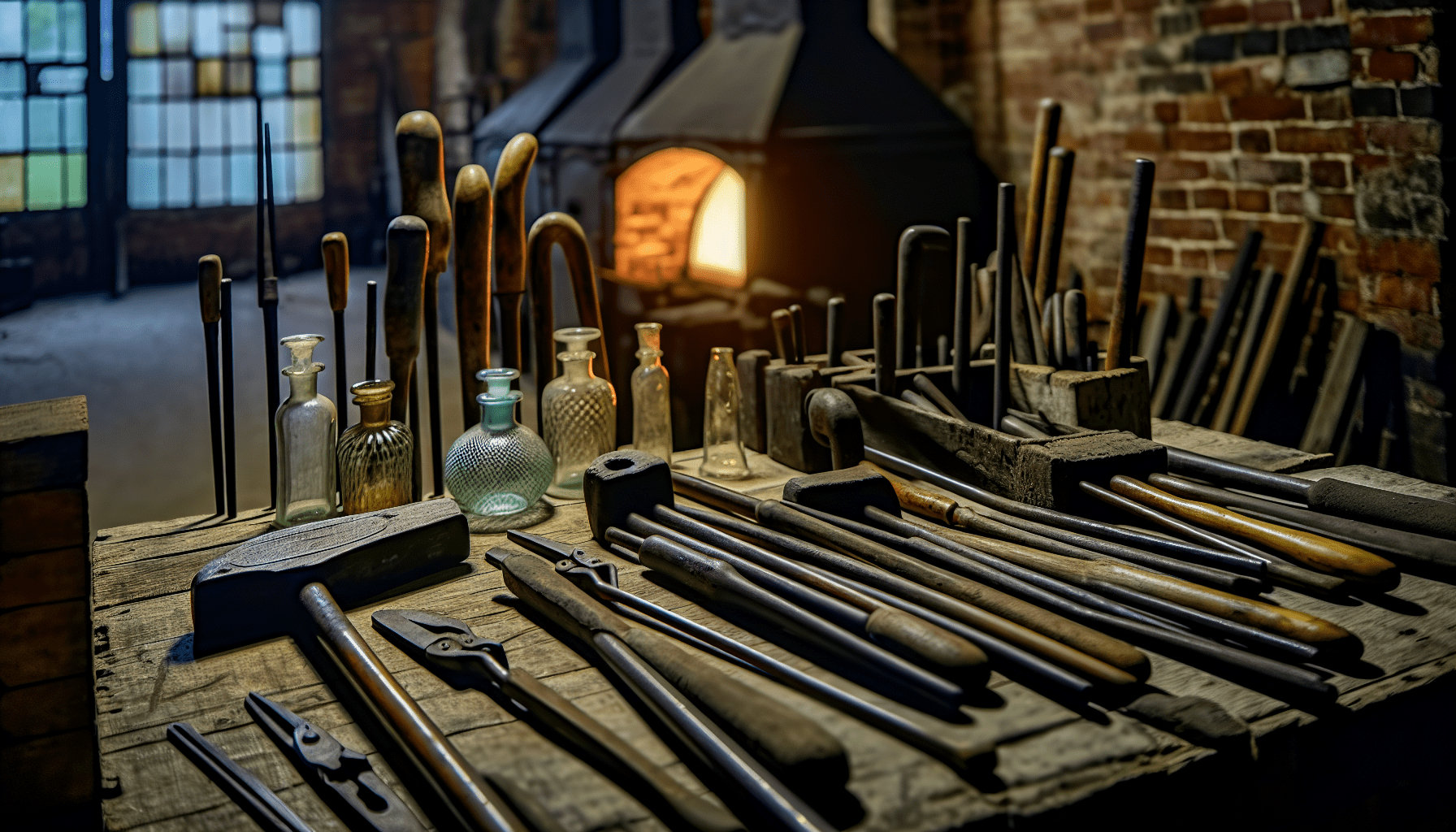
The relationship between West Virginia and the glass industry dates back well before its emergence as a key player in glass production towards the end of the 19th century. Historically, this state has been home to more than 400 establishments dedicated to glassmaking. The significant increase in activity within this sector during the late 1800s was fueled by an abundance of natural resources, a workforce with specialized skills, and deliberate industrial development strategies that positioned West Virginia at the forefront of glass manufacturing.
Early Beginnings
Glassmaking in West Virginia began in 1815 when Wellsburg saw the establishment of its inaugural glass factory. This event signaled the commencement of a significant chapter in the state’s history, propelling West Virginia to become an important contributor to global glass production.
Initially, this burgeoning industry centered on fulfilling regional needs by producing utilitarian items like bottles and panes for windows.
Expansion and Growth
The expansion of the glass industry in West Virginia was propelled by several key factors:
Abundant local resources such as sand, minerals, and fossil fuels
The state’s emergence as a central location for glass production during the 19th and early 20th centuries
The rise in coal mining activities which provided the necessary energy to power the furnaces needed for glass manufacturing
Skilled craftsmen from nearby states such as Pennsylvania and Ohio enriched West Virginia’s talent pool with their expertise, solidifying its reputation within the industry. This infusion of skill led to a boom in specialization from around the mid-1800s across different segments like tableware, bottle production, and flat glass manufacture. Such advancement played a critical role in shaping both industrial growth and economic progress throughout West Virginia.
Consequently, West Virginia rose to prominence on an international stage as one of the premier exporters of various types of high-quality glass products into global markets through much of the 20th century.
-Glass containers and bottles that served myriad purposes
-Smooth round marbles cherished by children and collectors alike
Specific areas within the state were noted or specialized in certain types of products that would cater to a particular market or functional purpose.Some major companies recognized these advantages and decided to make the move. Among the them are stalwarts such as Fostoria Glass Company and Fountain Art Glass Company.They saw immense value in relocating to take advantage of more economical land rates and lower-cost energy sources from local deposits, contributing significantly to the region’s industrial expansion.
Influence on American Glassmaking
West Virginia played a pivotal role in shaping the American glass industry. From 1825 to 1963, it was home to roughly one-seventh of all pressed glass tableware factories and held between 15 and 21 percent of the flat glass sector, along with a substantial segment of national bottle production. Positioned advantageously on river and rail routes for easy transport, West Virginia’s facilities were instrumental in distributing glass wares nationwide as well as internationally.
During the heightening periods of innovation in American glassware throughout the 19th and early-20th centuries, craftsmen from The Mountain State distinguished themselves by developing pioneering techniques related to both composition and aesthetics of their products. By employing approximately 7,500 workers by the year 1910, the industry not only boosted employment but also became entwined with regional labor movements and political dynamics.West Virginia was at the forefront of adopting automated machinery for creating glass products—a major advancement that revolutionized manufacturing methods.Additionally, due to its proximity to Pittsburgh—an epicenter for glass technology—it benefitted from shared expertise and workforce which enhances stature within the broader glassmaking field.
Showcasing West Virginia Glass: Notable Collections and Exhibits
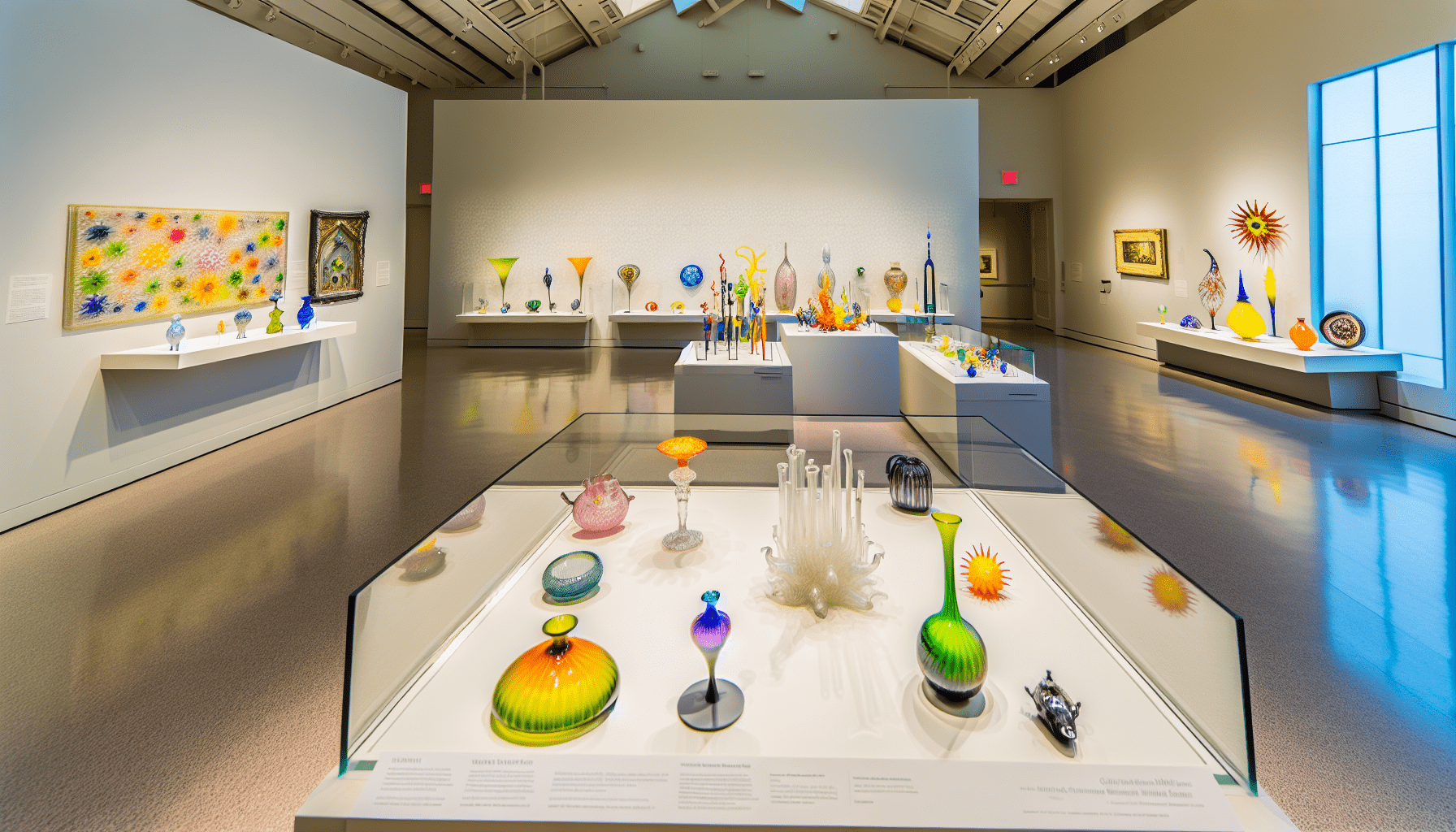
West Virginia’s tradition in glassmaking is alive and well, showcased through the various studios and factories where skilled artisans are actively producing. The state’s remarkable history of crafting exquisite glass is also preserved within extensive collections and displayed across numerous exhibits. These venues not only celebrate West Virginia’s historical expertise in glassmaking, but also underscore its ongoing significance on both national and international stages, providing a palpable link to the state’s illustrious legacy as well as its dynamic contemporary scene in the realm of glass art.
In-State Collections
The Museum of American Glass in West Virginia, located in Weston, and the Oglebay Institute’s Glass Museum in Wheeling, are central to preserving the state’s glassmaking heritage. These museums house comprehensive collections that tell the fascinating story of glass manufacturing in West Virginia. Noteworthy exhibits at the Museum of American Glass include the ‘Lady Jane Stained Glass Doll House’ and the upcoming ‘The Great American Carousel’ featuring stained-glass elements.
These museums not only celebrate West Virginia’s rich glassmaking past, but also reflect on the continued evolution and influence of the glass industry in the state and beyond. Projects like New American Glass: Focus West Virginia, backed by the National Endowment for the Arts, have enabled artists to collaborate with local factories, enriching museum collections with innovative glass designs.
National and International Exhibits
The reputation of West Virginia glass has extended beyond national boundaries and made a significant impact internationally. The mid-20th century saw Blenko glass become a recognized name, entering major museum exhibitions and collections, particularly highlighting modern design in the 1950s and 1960s. Designs by Winslow Anderson, Blenko’s inaugural designer, were notably featured in the Museum of Modern Art’s Good Design exhibitions from 1950 to 1955, exemplifying quality American design.
The Corning Museum of Glass’s international exhibition, Glass 1959, showcased innovative pieces by Blenko, including Wayne Husted’s bud vase with a unique bifurcated top. These exhibits helped elevate the profile of West Virginia glass on the global stage, further cementing the state’s reputation as a powerhouse in the world of glassmaking.
Online Resources
In today’s connected world, the rich heritage of West Virginia glass is just a search away in your browser. Enhanced by cookies that improve your online experience, it’s no longer necessary to embark on a journey to delve into its treasures. The digital domain of the West Virginia Museum of American Glass presents an opportunity for virtual visitors to investigate their collections and acquire reprints of historic catalogs.
The Glass Museum Online delivers content showcasing diverse pieces of glasswork from around the globe, including those made in both West Virginia and across America. Meanwhile, Blenko embraces digital tools for promoting and selling their hand-crafted glass items, merging time-honored artisanship with contemporary e-commerce tactics. These platforms serve as electronic gateways into the realm of Virginian glass arts—open to all who have access to the web.
The Art of Glassmaking: Techniques and Innovations
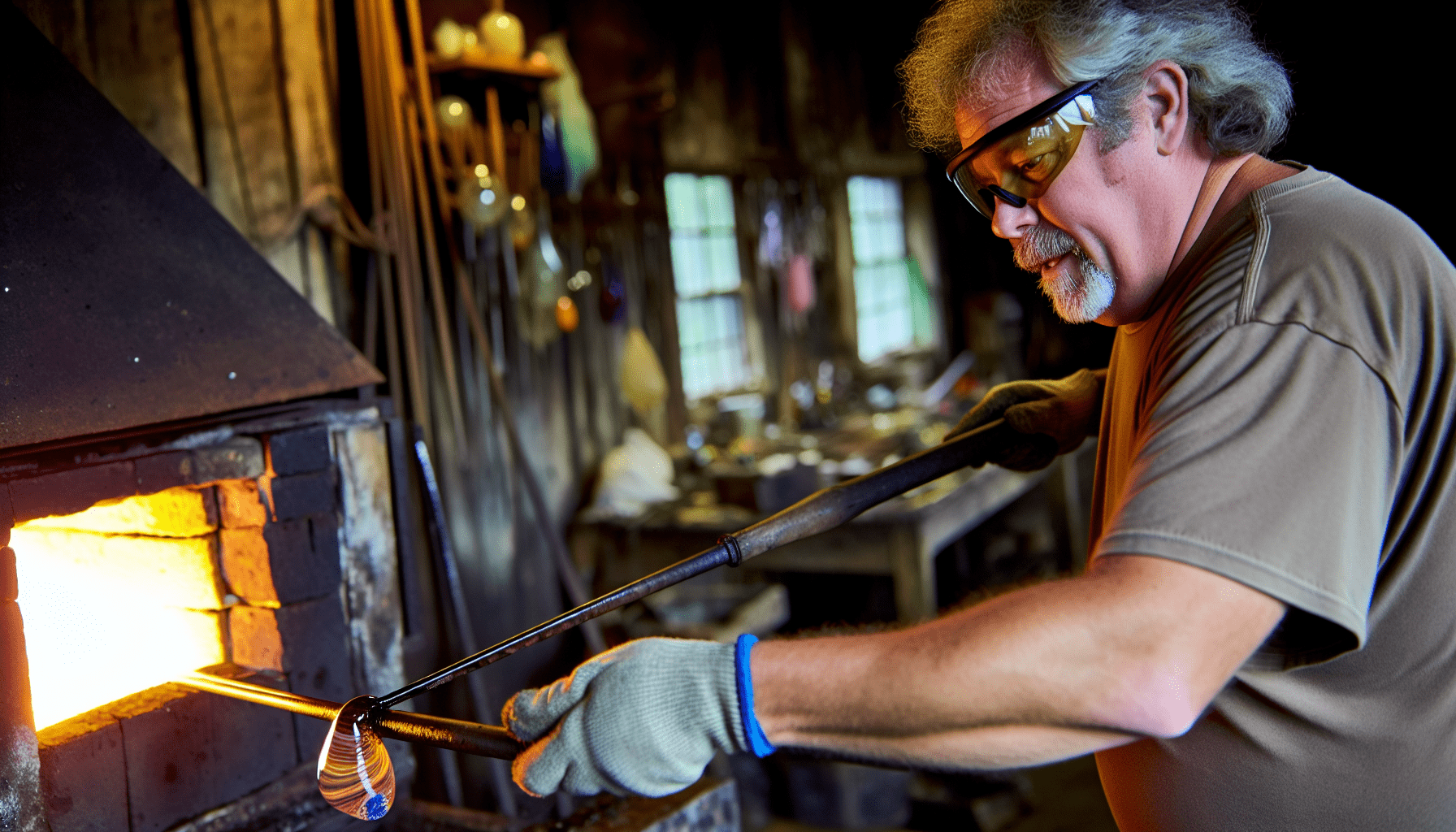
Craftspeople and their skilled methods are fundamental to the heritage of glass production in West Virginia. The state’s glassmaking traditions encompass both age-old practices such as pressed glass and glassblowing, along with contemporary advancements that include better annealing methods and similar technologies like advanced coloration techniques.
The combination of historical craftsmanship with modern advancements gives WV glass its distinct allure and attractiveness.
Traditional Techniques
In West Virginia, the timeless art of glassmaking is an exquisite dance between raw elements and craftsmanship, where fire fuses with sand. Skilled artisans in the region still employ centuries-old methods like glassblowing, pressing molten material into intricate molds, and assembling colorful stained-glass windows from carefully shaped pieces of tinted glass. The esteemed Blenko Glass Co., founded in 1921 and located in Milton, continues its legacy of creating fine pieces of glassware through these historic techniques.
With a commitment to keeping this traditional craft alive, Dakota Glass Works stands out as not just a producer but also as an educational center for aspiring artists. By teaching the skills necessary for mastering this art form, they have become a vibrant creative nexus. These enduring practices are integral to preserving West Virginia’s rich history in crafting exceptional works from glass.
Modern Innovations
Rooted in a rich heritage, the glassmaking industry of West Virginia is receptive to transformation. This sector has adopted modern advancements and leveraged them to improve its artisanship. An exemplar of this evolution is the Blenko Glass Company, which since 1893 has struck a balance between time-honored methods and cutting-edge innovation.
Blenko honors age-old techniques while eagerly integrating new procedures that refine their craft. Such openness to progress reflects the vibrant spirit inherent within West Virginia’s glass industry—a dedication to expanding the horizons of what can be achieved with Virginia glass craftsmanship.
Unique Creations
Crafted with exceptional skill and imagination, the glass pieces from West Virginia’s artisans are a testament to their creative prowess. Showcasing distinctive colors and styles, including the famed Blenko Blue, along with elaborate patterns and imaginative motifs, these works embody artistic brilliance within Virginian glass craft.
Pioneers such as Ron Hinkle Glass and the Blenko Glass Company stand among many that have etched significant marks in the landscape of West Virginia’s glass artistry. These creations transcend mere functionality to become artworks imbued with deep historical significance—celebrating both heritage and mastery inherent to Virginia’s renowned glassmaking tradition.
Visiting West Virginia’s Glass Studios: A One-of-a-Kind Experience
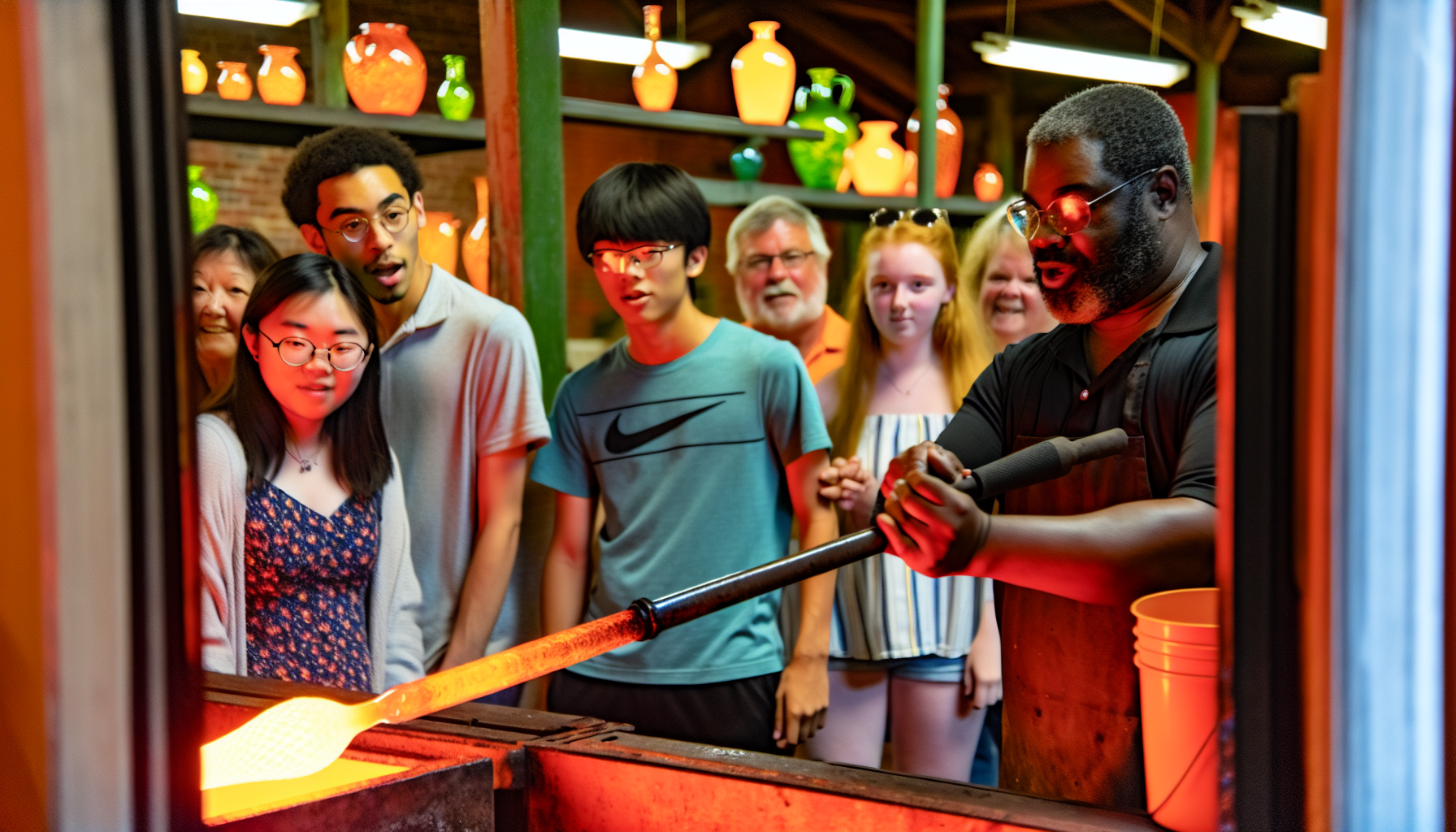
A trip to a glass studio in West Virginia is an enriching experience that entails:
Observing the detailed procedures of creating glass artwork, ranging from molding to adding hues
Experiencing firsthand demonstrations of the artisanship in glass production
Interacting personally with artisans who specialize in local Virginia Glass
This venture allows one to dive deep into the realm of glass craftsmanship and recognize the talent and imagination involved in producing each individual work.
It offers an exhilarating prospect: engaging hands-on by crafting your own pieces under the mentorship of experienced creators who offer inspiration.
Studio Tours
In West Virginia, studio tours at glassmaking facilities give the public an insight into the craft of glass artisans. Guests can observe firsthand the complexity and expertise involved in creating glass products during these educational excursions.
By inviting visitors to buy handcrafted items directly from local craftsmen through these tours, they not only gain knowledge but also play a role in preserving this ancient art form. This support helps sustain traditional glassmaking practices while amplifying their presence via light advertisements for greater awareness.
Hands-On Workshops
Experiencing the wonder of glassmaking is best done through direct involvement, and participating in a hands-on workshop offers just that. Studios specializing in West Virginia glass provide opportunities for individuals to immerse themselves in the craft of glass creation, crafting their own pieces with guidance from skilled artists.
These sessions are structured to accommodate different levels of expertise, welcoming novices eager to learn the basics and more experienced artisans seeking to perfect their skills in working with Virginia Glass.
Supporting Local Artists
Patronizing local artisans is not just about preserving heritage—it represents a commitment to community prosperity. Devotees of West Virginia glass support regional artists by acquiring exclusive, handcrafted glasswork, including special items crafted by Blenko Glass Company in honor of the state’s founding.
Blenko Glass Company’s yearly celebration with commemorative pieces for West Virginia’s anniversary offers an essential venue for enthusiasts to back local craftsmen. Such advocacy includes participating in learning programs that teach the art of glassmaking from experienced professionals, thereby aiding in securing the craft’s lasting presence within the industry.
Preserving West Virginia Glass: Tips for Collectors
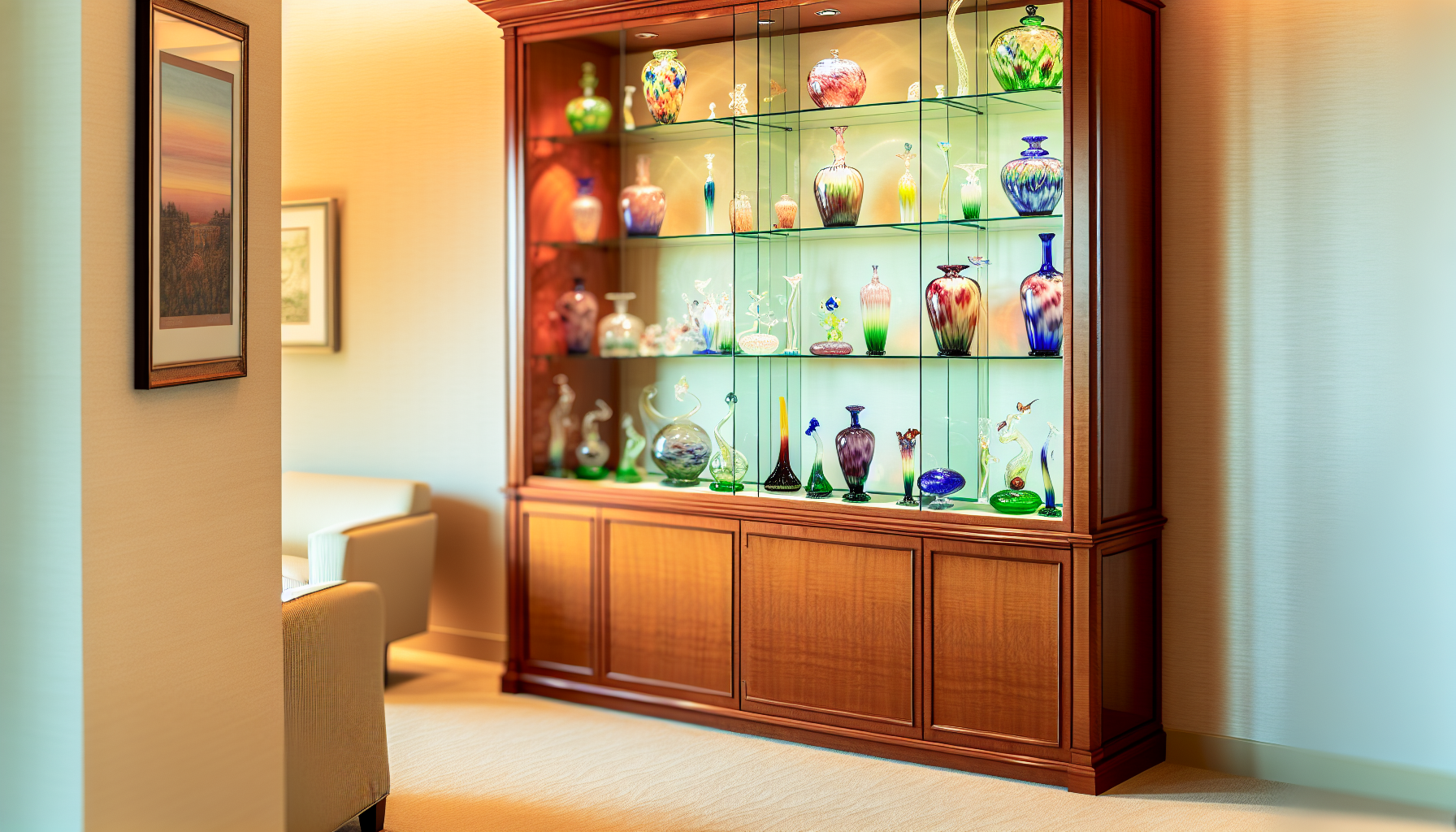
Ensuring the longevity and value of Virginia glass pieces requires careful attention to their preservation. Collectors must commit to a regimen that includes thorough cleaning, proper maintenance, considered display options, and accurate appraisal for these West Virginian treasures to maintain their beauty and integrity.
Cleaning and Maintenance
Preserving the sparkle and structure of your Virginia glass art treasures requires diligent care. Gently wipe them with a soft cloth that has been lightly moistened with distilled water, to prevent any mineral deposit buildup from regular tap water. Steer clear of harsh cleaning agents or potent acids which could mar the surface and detract from its shine.
To ensure your glass art remains pristine.
Clean it using a blend of vinegar mixed with water.
Buff it dry using a cloth free from lint to avoid leaving streaks.
For pieces that are uniformly shaped, use a clean, gentle paintbrush for dusting purposes.
For those more complex items featuring textured details, employ compressed air as an effective means to dislodge dust while avoiding harm to the piece.
Displaying Your Collection
When curating a display for your collection of West Virginia glass, it’s crucial to focus on both its visual charm and the longevity of the items. To maximize the aesthetic impact of your collection, consider these methods:
Opt for sturdy floating shelves that can safely bear the weight of your glass pieces.
Install LED lights tactically to cast an alluring glow on each item.
Vary pedestal heights within your arrangement to give depth and movement.
Employ rotating displays so viewers can appreciate every facet of your intricate glass works.
Adhering to these guidelines will help you assemble an impressive exhibit showcasing the splendor of your Virginia Glass Collection.
In terms of protecting and safeguarding delicate items in such a presentation:
Ensure they are stationed beyond busy walkways
Firmly anchor them using museum putty or similar adhesives
Opt for cabinets with doors crafted from UV-resistant glass which offer defense against damaging ultraviolet rays while maintaining visibility.
Insuring and Appraising
For those who cherish their collection, protecting the value of West Virginia glass items is imperative. Securing the services of a qualified appraiser with rigorous adherence to professional and ethical standards set by leading institutions is essential for determining your pieces’ value for insurance reasons.
Understanding the distinction between agreed value and stated value coverage options is important. It’s recommended that collectors regularly reassess their collection alongside an appraiser to keep abreast with changes in market conditions and inflation, thereby maintaining precise insured values on record with their insurance agent.
Summary
The tale of West Virginia glass exemplifies a legacy marked by skillful artisanship, groundbreaking creativity, and a strong sense of fellowship. Tracing its roots from modest origins to worldwide renown, the saga of this craft is ever-unfolding and enthralling. When you gaze upon an artifact made of West Virginia glass, bear in mind the artisans who molded it, the rich past that enshrouds it, and the fervor that drives its existence. Let us raise a toast to the splendor embodied by glasswork, to opportunities shaped through artistic vision, and to Virginian pride reflected in every piece.
Frequently Asked Questions
What glassware is made in West Virginia?
In West Virginia, Blenko is renowned for crafting hand-blown glassware with stunningly vibrant colors in its designs.
Is Blenko Glass company still in business?
Indeed, Blenko Glass Company remains operational and has been crafting handblown glass items for a period exceeding 128 years.
Is Blenko glass valuable?
The value of Blenko glass varies, with smaller sought-after items often being sold for reasonable sums and bigger pieces commanding market prices between $1,500 to $2,000.
Due to their scarcity and state of preservation, pieces from the mid-20th century are considered among the prettiest selections.
When did glassmaking begin in West Virginia?
In 1815, the inaugural glass factory in Wellsburg marked the commencement of glassmaking in West Virginia.
What traditional techniques are used in West Virginia glassmaking?
In West Virginia, the age-old art of glassmaking is upheld through methods such as blowing glass, molding pressed glass, and creating stained-glass windows. These practices have been handed down from one generation to the next and remain in use across the area.

